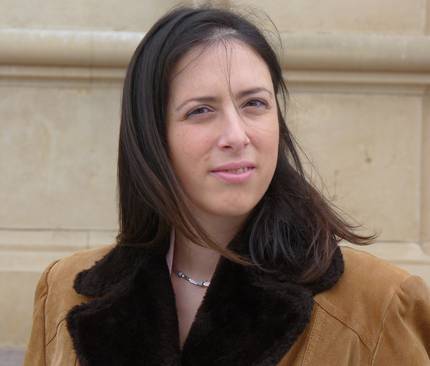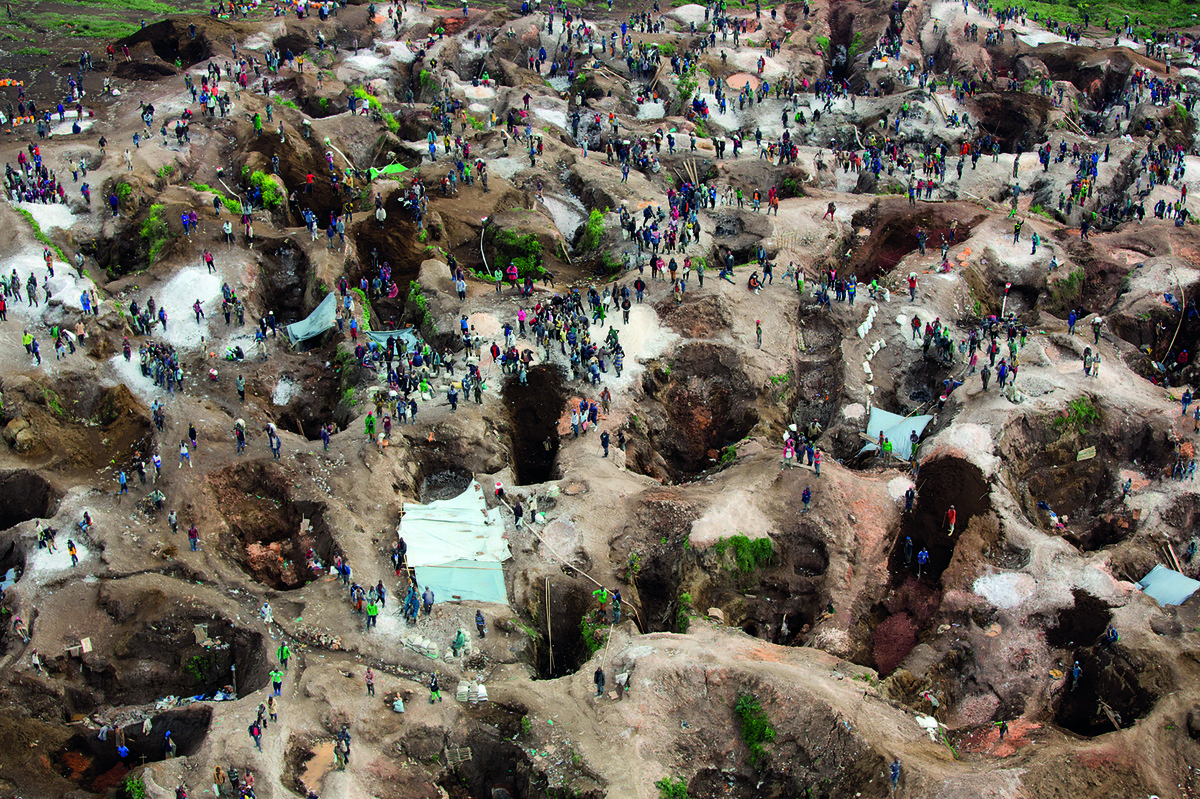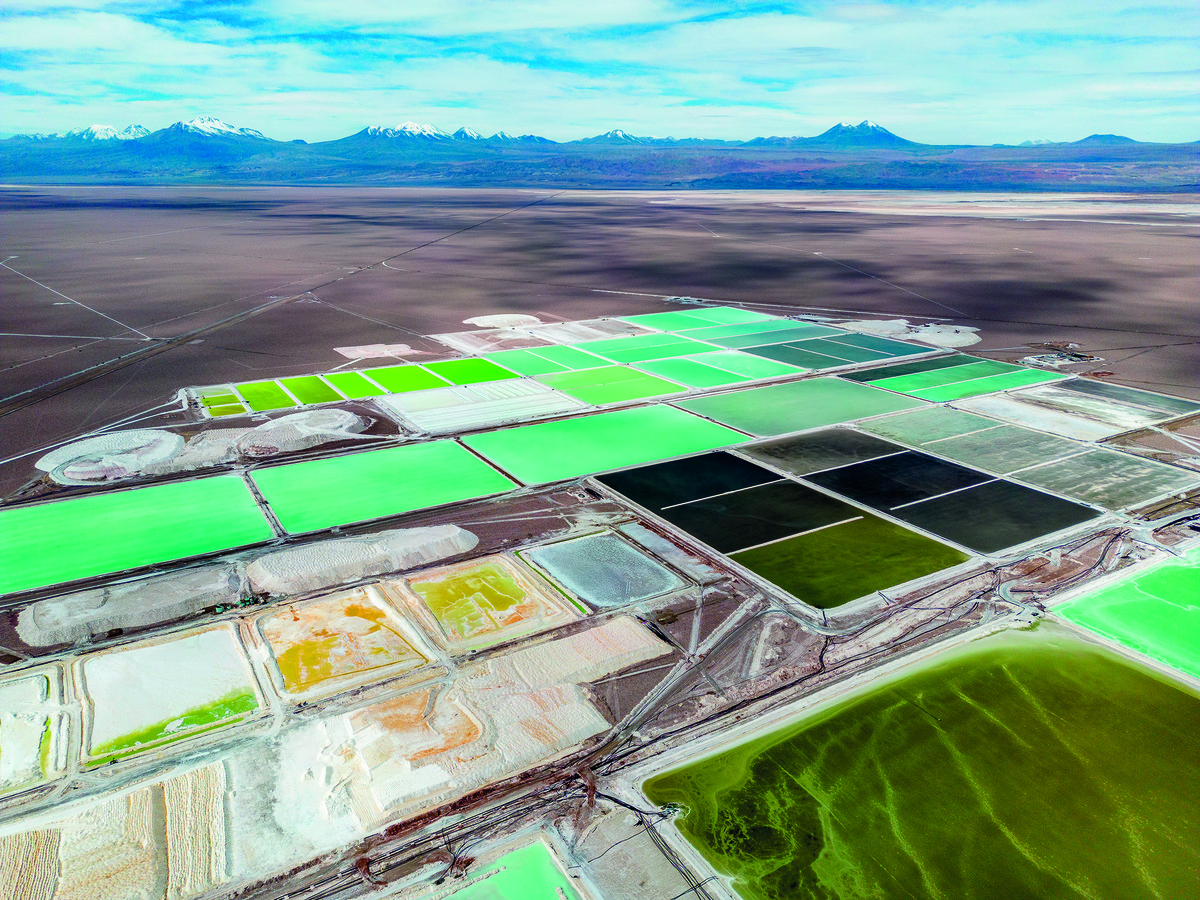Beyond mineral scarcity
Even if we do not see them, they are perfectly integrated into our daily lives and are essential for the energy transition. In the heart of electronics, electric cars and renewables, there are a lot of elements that are extracted from mines. We need them in huge numbers and we are extracting and extracting them. But many are already called “critics,” increasingly. Is there enough? Where do we get from?
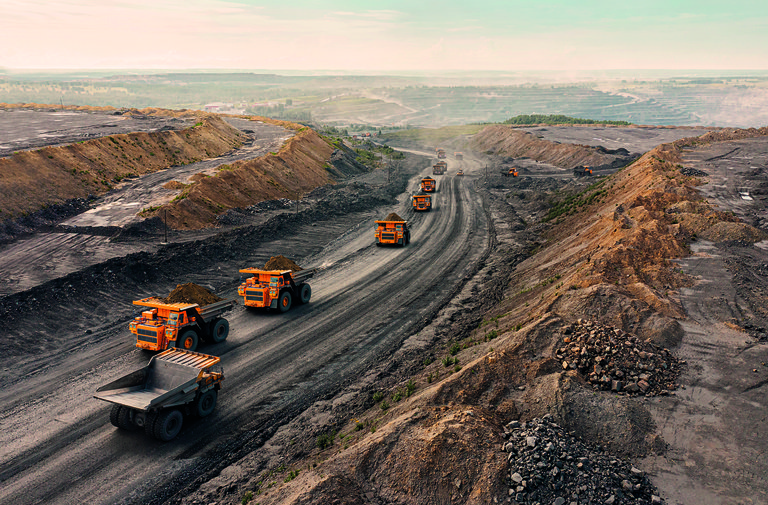
Disprosion, neodymium, prometheus, tantalum, gallium, arsenic, indium, tin, lithium, cobalt, bromine, magnesium, gold, silver, copper, graphite, phosphorus… Almost certainly all of them if at present they are not in your hands, in your pocket, in the bag or at the table. These and others are essential in wind turbines and solar panels. And of course, in electric vehicles.
An interesting curiosity would be to realize the elements that we have at our fingertips, some so weird, if not for the problems behind them, which are not of all kinds. Firstly, we have a serious problem with the borders of the planet. “If we continue at this pace, with this philosophy and with this model, we have very little time left,” says Tecnalia researcher Maider García de Cortazar Aguirrezabal.
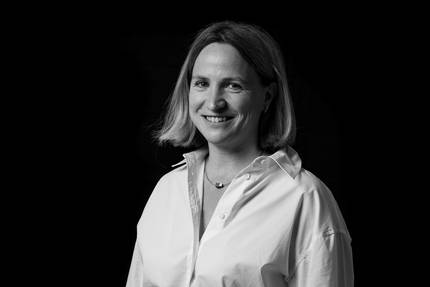
“This century, in 23 years, we have started as much as what is recorded throughout history,” explains Alicia Valero Delgado, researcher at the University of Zaragoza. “This is true for copper, nickel and, in general, all mineral raw materials. The pace is so wild that, if we do not find new reserves, they will be depleted soon, for decades.”
“And it’s not just the case of some strange elements,” Valero explains. “Copper, for example, we all know it and is quite abundant in itself, but because we want to electrify it, we need copper for everything. And we already have a shortage in mines.”
Increase and increase in the list of critical raw materials. In the 2011 EU list there were 14, in the 2023 list there are 34. “The elements are more because some raw materials are mineral groups, for example rare earths”, matiza Valero. “Therefore, almost the entire periodic table will soon be critical.”
The shortage of raw materials is no longer a problem for the future. “There are supply problems with different parts and equipment, the source of which is the shortage of raw materials,” says Valero. “We need a lot of scarce raw materials and the mines we have don’t contribute so much. Moreover, even if the reserves are to be expanded, it takes 10 to 15 years to open a new mine. So, we have a problem and from now on it will be bigger.”
The crisis of microchips and semiconductors was significant during the pandemic. Valero thinks it was not just a short-term problem: “We are seeing the symptoms of a structural problem, of wanting to grow and grow on a finite planet. When we were few and the resources were abundant, the system worked. But by reaching peak extraction, these exhaustion signals are causing supply chain problems.”
No transitional raw material
“The problem is on top and has increased because we have realized that ecological transition is fundamental,” adds García de Cortazar. “For this we need solar panels, wind turbines, mobility electrification, etc. We have technological solutions, but we don't have the necessary material, especially metals. We have made a transition, but we have not analyzed where we will get those materials.”
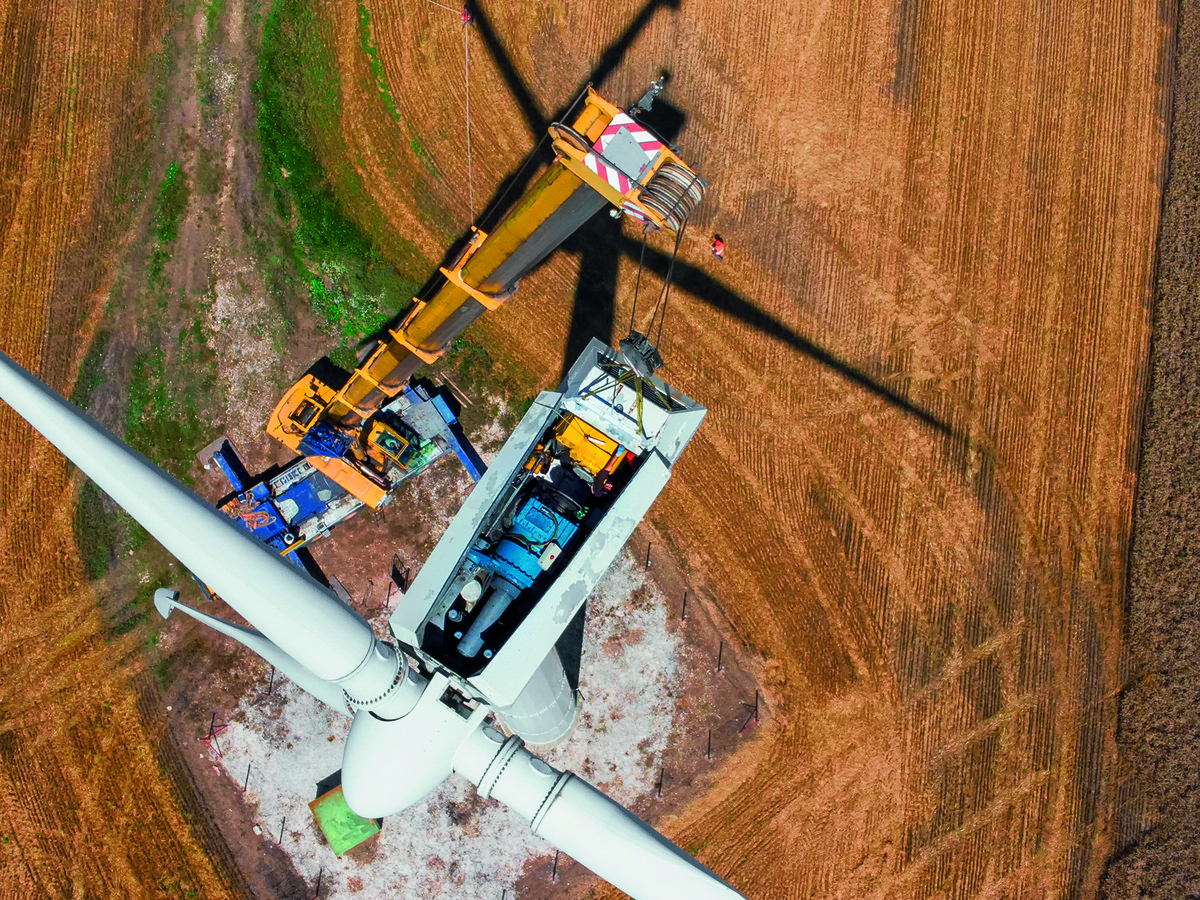
According to the report published last year by the International Energy Agency (IEA), demand for critical raw materials doubled between 2017 and 2022. Lithium demand tripled, cobalt demand increased by 70% and nickel demand increased by 40%. And above all, behind these increases is the renewable energy sector. In 2022, this sector consumed 56% of global lithium production, 40% of cobalt and 16% of nickel (in 2017 it was 30, 33 and 10% respectively).
The problem with the electric car is the same, according to García de Cortazar. “In Europe we have put in a strategy to introduce electric cars and not produce more. And it's about creating gigafactories to produce the batteries in them, and so on. But we haven’t figured out where we bring the necessary metals.”
Electric cars need six times more critical metals than combustion cars. According to the EIA, the battery of a conventional electric car contains 40 kg of nickel, 24 kg of manganese, 13 kg of cobalt and 9 kg of lithium (varies greatly depending on the type and size of the battery, for example, the Tesla Model S have 62 kg of lithium). For the engine they need half a kilo of neodymium and more than 50 kilos of copper to complete the network of cables. Electric cars are wheeled mines.
“The electric car is the big elephant in the room,” says Valero. “It’s the sector that needs the most critical materials. It requires almost the entire periodic table. And, therefore, it is also the most vulnerable sector, because the scarcity of any element directly affects it.”
“We also have the problem of geopolitics,” adds García de Cortazar. In Europe, almost all critical material is imported. And many materials are concentrated in few countries. Today, China has the monopoly of most critical raw materials, both for having resources on its land and for controlling the exploitation and processing of resources from other countries.
To address this situation, the European Commission presented last year the Critical Raw Materials Bill. The objective is to strengthen the EU’s capacities throughout the raw material supply chain. “So far they have focused on decarbonisation and ecological transition, and now they seem to have realized,” says García de Cortazar. “We must work in that direction.”
“In Europe there is also potential for raw material extraction,” says Valero, “perhaps not so much in South America as in Africa, but yes. The truth is that in other countries it is much easier to open mines, because here mining has a great rival.”
Mining impact
Another problem that mining has is its high impact on the environment as well as on the living conditions of the local people and, in many cases, on human rights.
“The hypocrisy is that we don’t want it in our environment because it has a huge impact and the children of Congo suffer it,” says Carcia de Cortazar. We don't want mines, but we want mobiles without seeing what's behind them.
And the same with environmental impacts. “There is no green or sustainable mining,” says Valero. “They all have an impact. Things can and should do better, but that problem is there. Furthermore, mining makes it difficult to extract raw materials. “The shift from 0.8% to 0.4% of mine extraction has tremendous consequences on energy, water and discharge, which grow exponentially. So CO2 emissions from mining are growing dramatically. What a transition we are making.”
“In northern Europe there are interesting models that use processes that generate the least impact possible,” adds García de Cortazar. “Doing so more sustainably is possible and we must go that way. The impact will always be, but we must try to minimize it with the technology and resources available. We have no more options. Because we need mines."
A huge rare earth reserve was discovered last year in northern Sweden. It's called Per Geijer, and they estimate it has 1.3 million tons of rare earths. Norway, for its part, has recently authorised the start of exploration of the seabed. “All these possibilities need to be looked at in Europe. We have not looked at all this for many years, as if it were not our problem,” says García de Cortazar.
Need for reduction
Considering the amount of raw material needed for the ecological transition, calculations do not provide it. Valero investigates it a lot and is clear: “The energy transition in the global north cannot be made around the world if the reserves do not increase much. That is evidence. In Spain probably also in Europe, but there are no resources to do it around the world.”
“The problem is to consider the energy transition as a continuation of the previous one,” he explains. “Painting green is not good, because today’s economy is based on continued growth, as if we had unlimited resources. The root model must be changed, without giving up progress, but with a drastic reduction in resource consumption.”
Valero considers it essential to value natural resources and to measure the cost of their extraction, not only the current cost but also the cost for future generations. “The indefinite extraction of a natural heritage is leaving descendants without that heritage. Because I'm from Zaragoza, I'm setting this example. The Pilar Cathedral is like selling it at brick price. We would sell a historical and cultural heritage at a derisory price, and for the successors that basilica would not exist. We're selling nature cathedrals at brick price.
It also considers that the circular economy is essential, but in the broader sense. “When talking about circular economy, one always thinks of reusing the resources used, but the first premise is that it does not use them. The first objective must be to use fewer resources. And then, yes, recover what's used. We cannot continue with that barbarity of using and throwing, because there are not enough resources”.
García de Cortazar: “With the current linear model, there are not enough raw materials for a global energy transition. If we can establish a circular model, maybe we can. Consumption must be reduced. We can’t use as many materials as we want, but for things we really need.”
In order to resolve the situation, a great deal needs to be changed. “We need to change the model, reduce consumption, seek and exploit more resources, while working hard on recycling and eco-design.”
Importance of responsible design
Ecodesign is key, on the one hand, because it is essential to be able to recover and recycle as much as possible. “So far it has been produced and produced without worrying about the end of life of the products,” Valero said. “At the end of a cell phone’s life, for example, you don’t know what materials it has, where they are, how they can be separated… and each model is different. So we're losing critical materials. This has to be changed and designed from the very beginning so that it can be recycled.”
García de Cortazar highlights another important aspect of ecodesign: “It’s not just thinking about how we’re going to disassemble and recycle later, but whether the materials we use at the beginning or whether other alternatives can be used. There is a tremendous world to investigate.”
In fact, there are many research being done in this field. “The main stimuli of research have always been to achieve high capacities and good prices. Now we have another focus: materials. For example, rare earth magnets have enormous capabilities. But now a lot of research is being done on whether you can get magnets of interesting capabilities without using rare earths or using less.”
Clearly there is much to be improved in recycling: “Today, Europe brings 100% of China’s magnets, processed. And it recycles less than 1 percent. And not because you can't, but because you don't. I am not going to say that 100% can be recycled, but this percentage must be greatly increased. We have an enormous margin. We must create processes and companies that allow recycling.”
However, both experts are clear that recycling will not solve the problem. “We will need all the other solutions,” says García de Cortazar. “Although nobody likes it, we’ll need more mines. But the model must be circular and I think the quickest solution would be to reduce consumption.” Valero also makes it clear: “First reduction, then circular economy and finally local mining.”
And they have hope. “The situation is really serious, but I am seeing very important movements,” says García de Cortazar. “I have been researching for over twenty years and have never seen as much consciousness and movement as I have now. And that gives me a little hope.”
“The discourse of change of direction is making progress and, unlike what we have done so far, we have also begun to listen in Europe,” says Valero. “I am afraid, however, that when something is done it is not late. Surely the changes will come, because there is no other alternative. I don't know if I'll see it, I think so, but my kids are sure. It's about how we want to make change, in a violent or more orderly way. If we are able to do so in time, I think we can make it smoother.”
Buletina
Bidali zure helbide elektronikoa eta jaso asteroko buletina zure sarrera-ontzian




